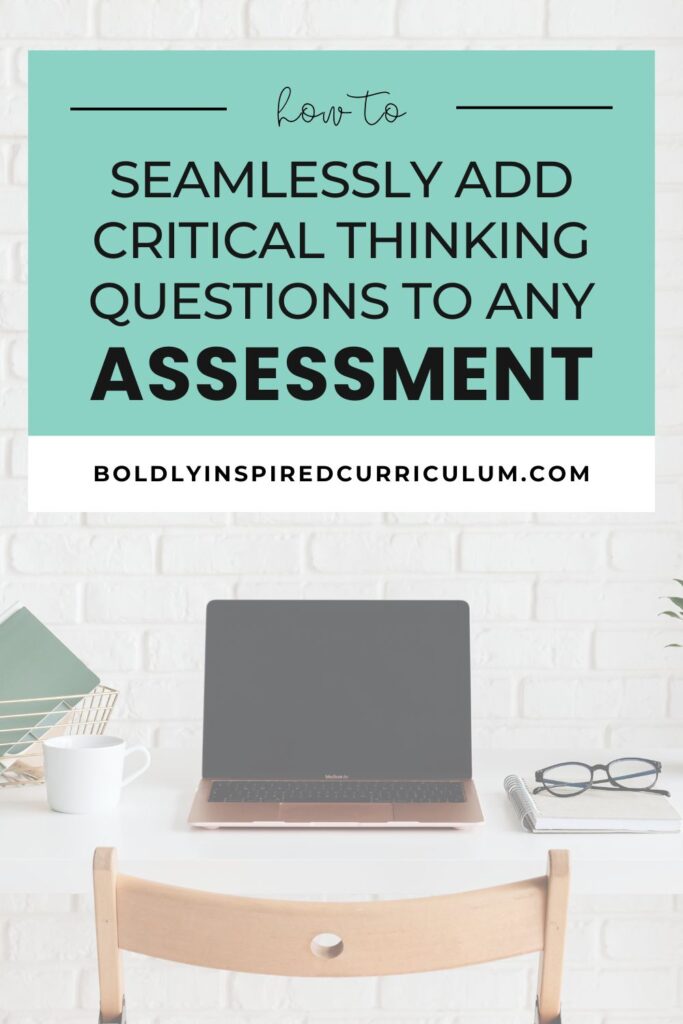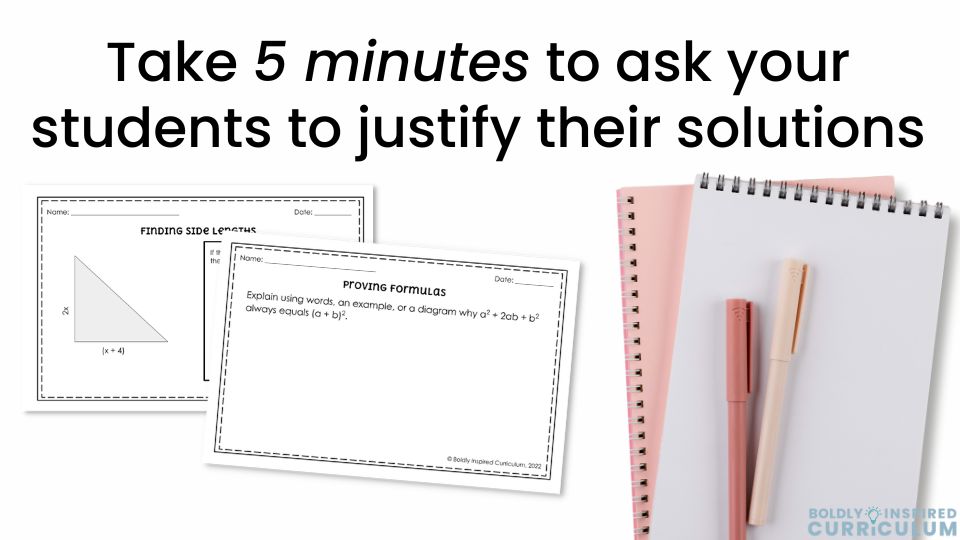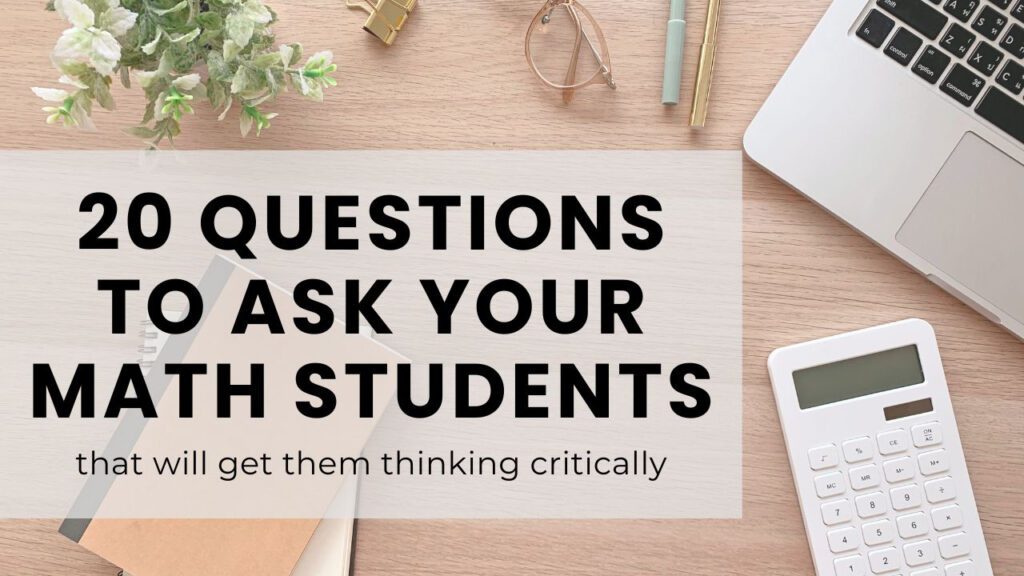I’ve said it once and I’ll say it again. quality over quantity. I am on a mission to help other teachers make their math assessments more meaningful and insightful by reducing the number of questions that they’re asking students to complete and adding in critical thinking questions.
I’ll always keep it real with you. Your students are not going to need 90% of the math that they learn in your class. This is what they are going to need: how to problem solve and justify their answers based on evidence.
Colleges and employers do not care about a student’s GPA. They want to know that a student can work hard and persevere through any problem that they face in their job or career. We cannot continue to teach using the plug-and-chug method because that is diminishing the importance of math class and the life skills that students have the potential to learn in high school.
There are a few different ways to add critical thinking questions to any of your formative or summative assessments.

Table of Contents
ToggleLet's start with formative assessments…
You can easily add higher order thinking questions to exit tickets, classwork, or guided notes.
How to level up your exit tickets
You can make any question become a higher order thinking question just by asking your students to list out the steps.
Let me give you an example. If you were to ask your students how to solve a multi step equation, start by asking them to simply solve the problem. Then, on the side have them list out their step by step process and explain how they know that the answer that they got was correct.
This just takes your original problem a bit further so that you know your students actually understand without having to give them a full assessment. It’s also just a really quick and easy way to get your students thinking more critically.
If you want to go a little bit deeper with your exit ticket and your students are still solving equations, you can ask them to explain solving multi-step equations to a student in 5th grade.
We know that fifth grade students can add, subtract, multiply, and divide but how would they explain solving multi-step equations to a student that has really never seen an equation before. What would that look like?
It is always really interesting to see what your students will say about the steps that they take to solve the problem and how they know that they are confident that their answer is correct.
Slim down your homework assignments
You can do the same thing with regular class work, homework, or quizzes. I really believe in less is more and quality over quantity. Instead of assigning your students 20 problems for multi step equations you can assign them five and then add one or two critical thinking questions.
It’s important for your students to know that these questions are low stakes at first because you want them to just share their ideas and thought processes. It doesn’t necessarily have to be right. This is especially true for class work that you might not be grading for accuracy.
If you’re able to give your students the opportunity to think through a problem then you will be able to see what they do and don’t understand, and it will get them thinking about math in a deeper way.
Adding critical thinking questions to summative assessments
Before adding a lot of challenging critical thinking questions to your assessments, it’s really important to prepare your students so that they know what to expect. Of course, you never want to catch your students off guard with the assessment.
Adding these types of questions to your daily routine (or even weekly routine) is really helpful for having your students practice that deeper thinking and letting them know that the expectation is that you want them to go beyond just getting the right answer.
If problem solving and having a deeper understanding of math is a priority for you and your classroom, then they should know that that’s the case.
The same thing that I said about formative assessments and homework applies to summative assessments as well. If you are going to add critical thinking questions, do you really need to have 20 to 30 questions on a test? Probably not.
Instead, you can have 8-10 questions, depending on how long your unit is, and add in 2 to 3 critical thinking questions that combine multiple types of questions from the test.
For example, if you are teaching polynomial operations, your critical thinking question could be compare and contrast adding polynomial expressions and multiplying polynomial expressions. Multiple subtopics within a larger unit are included while you are cutting down on the amount of questions.
Another critical thinking question that I love to have in my summative assessments is error analysis. I recommend taking common errors from questions that your students have shown in the past and replicating those as error analysis problems.
It’s very evident from error analysis problems which students actually understand and which students are just going through the motion of solving the problems.
I’ve always found that my students really struggle with identifying the errors because they aren’t really analyzing the problems. They see the work on the paper, think that it looks right, and assume that there is no error.
However, the process of finding an error, fixing it to show the correct work, and explaining how they know that their work is correct is an invaluable skill.
My final thoughts about adding critical thinking questions to your assessments.
Adding critical thinking questions to your summative assessments doesn’t need to be challenging or overcomplicated. You don’t have to create a whole new assessment. Take out some of the repetitive problems and replace it with a critical thinking question. Some really good examples of this would be compare and contrast, error analysis, explaining your thinking, and explaining a concept to someone in a previous grade level.




